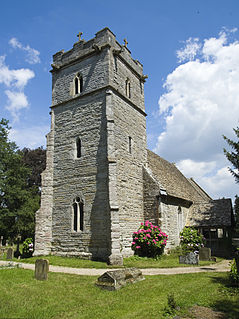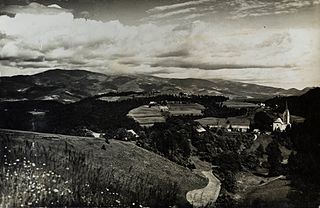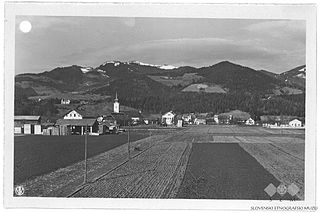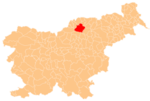| Šmiklavž | |
|---|---|
| Coordinates: 46°26′58.96″N15°7′9.27″E / 46.4497111°N 15.1192417°E Coordinates: 46°26′58.96″N15°7′9.27″E / 46.4497111°N 15.1192417°E | |
| Country | |
| Traditional region | Styria |
| Statistical region | Carinthia |
| Municipality | Slovenj Gradec |
| Area | |
| • Total | 3.99 km2 (1.54 sq mi) |
| Elevation | 557.6 m (1,829.4 ft) |
| Population (2002) | |
| • Total | 150 |
| [1] | |
Šmiklavž (pronounced [ʃmiˈklaːu̯ʃ] ) is a settlement in the City Municipality of Slovenj Gradec in northern Slovenia. The area was traditionally part of Styria. The entire municipality is now included in the Carinthia Statistical Region. [2]

The City Municipality of Slovenj Gradec is a municipality in northern Slovenia. The seat of the municipality is the town of Slovenj Gradec. It is part of the historic Styria region, and since 2005 it has belonged to the NUTS-3 Carinthia Statistical Region.

Slovenia, officially the Republic of Slovenia, is a sovereign state located in southern Central Europe at a crossroads of important European cultural and trade routes. It is bordered by Italy to the west, Austria to the north, Hungary to the northeast, Croatia to the southeast, and the Adriatic Sea to the southwest. It covers 20,273 square kilometers (7,827 sq mi) and has a population of 2.07 million. One of the successor states of the former Yugoslavia, Slovenia is a parliamentary republic and a member of the United Nations, of the European Union, and of NATO. The capital and largest city is Ljubljana.

The Carinthia Statistical Region is a statistical region in northern Slovenia along the border with Austria.
The parish church from which the settlement gets its name is dedicated to Saint Nicholas (Slovene : sveti Miklavž) and belongs to the Roman Catholic Archdiocese of Maribor. It dates to the 13th and 16th centuries. [3] A second church on a hill south of the settlement is dedicated to Saint Helena. The earliest phases of the building date to the 13th century. [4]

A parish church in Christianity is the church which acts as the religious centre of a parish. In many parts of the world, especially in rural areas, the parish church may play a significant role in community activities, often allowing its premises to be used for non-religious community events. The church building reflects this status, and there is considerable variety in the size and style of parish churches. Many villages in Europe have churches that date back to the Middle Ages, but all periods of architecture are represented.

Saint Nicholas of Myra, also known as Nicholas of Bari, was an early Christian bishop of the ancient Greek city of Myra in Asia Minor during the time of the Roman Empire. He is revered by many Christians as a saint. Because of the many miracles attributed to his intercession, he is also known as Nicholas the Wonderworker. Saint Nicholas is the patron saint of sailors, merchants, archers, repentant thieves, children, brewers, pawnbrokers, and students in various cities and countries around Europe. His reputation evolved among the faithful, as was common for early Christian saints, and his legendary habit of secret gift-giving gave rise to the traditional model of Santa Claus through Sinterklaas.

Slovene or Slovenian belongs to the group of South Slavic languages. It is spoken by approximately 2.5 million speakers worldwide, the majority of whom live in Slovenia. It is the first language of about 2.1 million Slovenian people and is one of the 24 official and working languages of the European Union.










